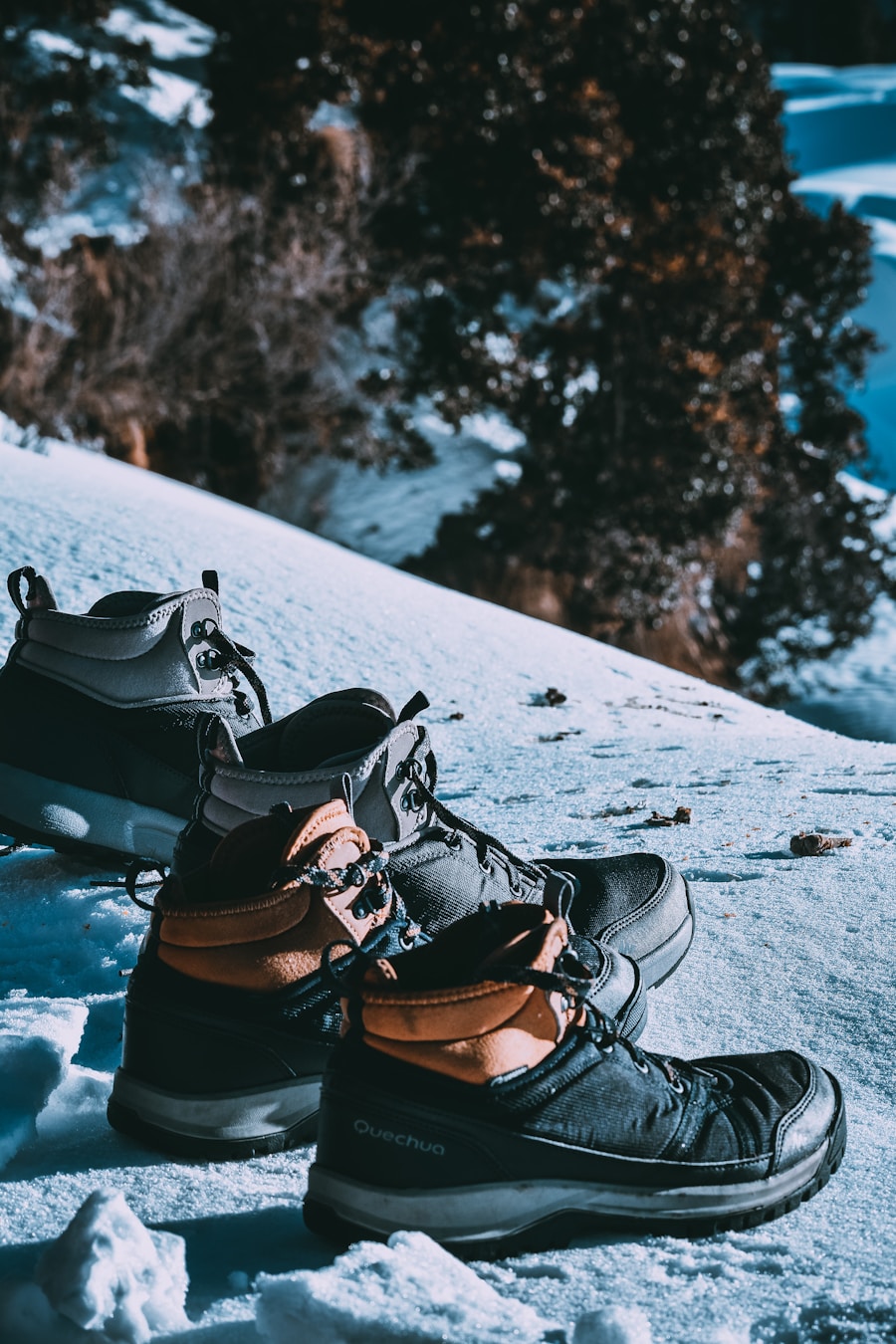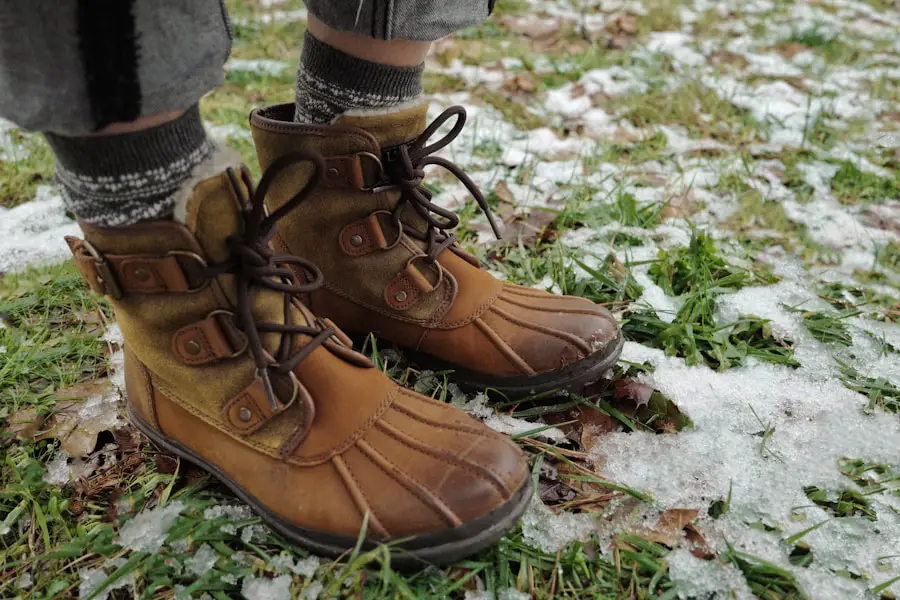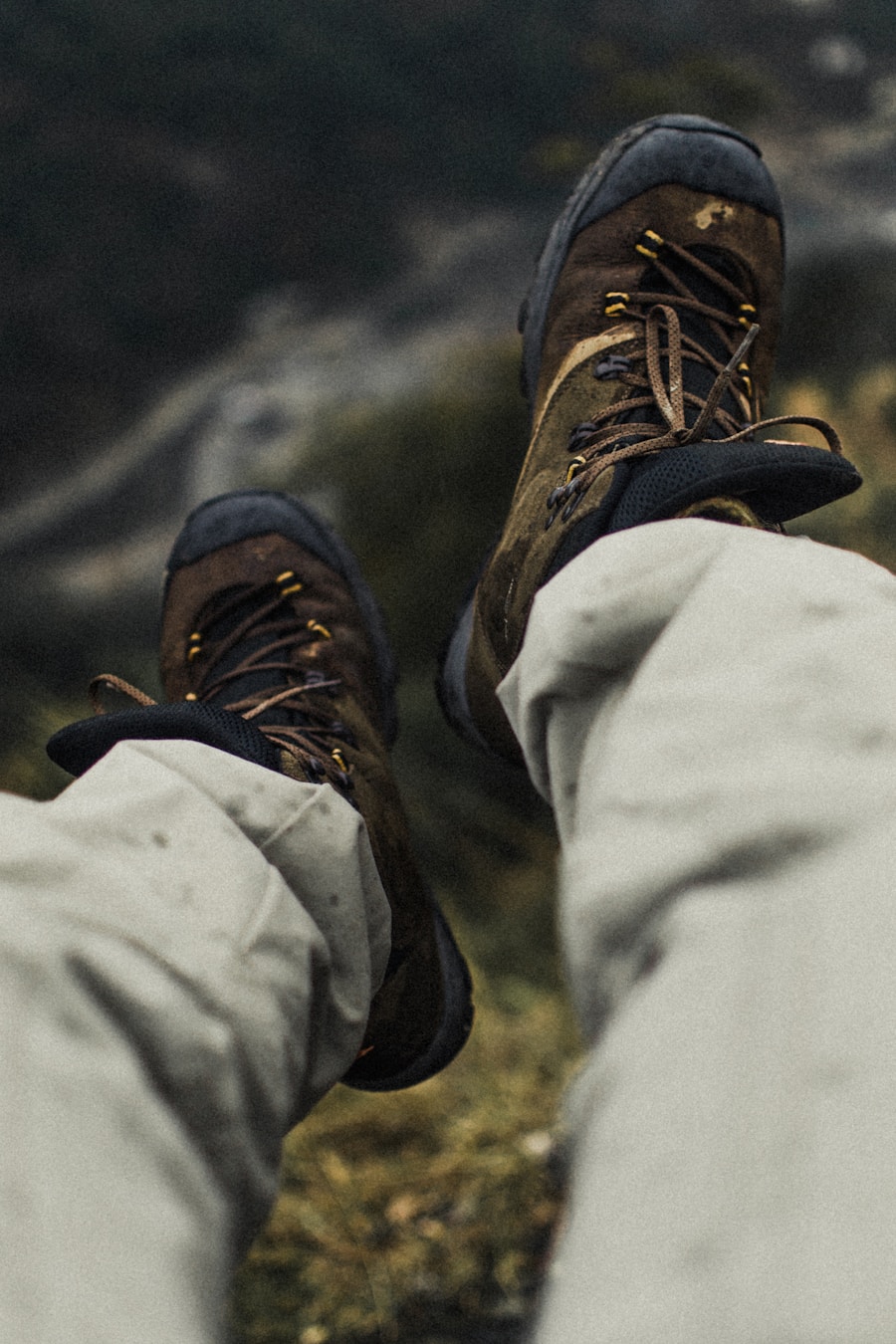Timberland boots, colloquially known as “Timbs,” have transcended their original purpose as rugged work boots to become a staple in urban fashion. Initially designed for durability and functionality, these boots have found a unique niche in streetwear culture, particularly in cities where style and practicality often intersect. The iconic yellow boot, with its distinctive silhouette and branding, has been embraced by various subcultures, from hip-hop artists to fashion-forward individuals.
This widespread appeal can be attributed to their versatility; Timbs can be paired with a range of outfits, from casual jeans to more polished ensembles, making them a go-to choice for many. The rise of Timbs in urban fashion is not merely a trend but a reflection of broader cultural movements. Their association with resilience and hard work resonates with many urban dwellers who appreciate the blend of style and substance.
The boots have been featured in music videos, fashion shows, and social media campaigns, further solidifying their status as a fashion icon. As a result, Timberland has successfully positioned itself at the intersection of functionality and fashion, appealing to a diverse audience that values both aesthetics and practicality.
Key Takeaways
- Timbs have become a popular fashion choice in urban settings, known for their rugged and stylish appearance.
- The construction of Timbs involves high-quality materials such as premium leather and durable rubber soles, making them a sturdy and long-lasting footwear option.
- While Timbs may offer good ankle support and traction for urban environments, they may not provide the same level of protection and support needed for serious hiking.
- Traditional hiking boots are designed specifically for outdoor activities, offering better waterproofing, support, and protection compared to Timbs.
- When choosing footwear for hiking, it’s important to prioritize comfort, support, and functionality over style.
The construction and materials of Timbs
Timberland boots are renowned for their robust construction and high-quality materials, which contribute to their longevity and performance. The upper part of the boot is typically made from premium nubuck leather, which is not only durable but also water-resistant. This feature is particularly important for those who wear Timbs in various weather conditions, as it helps keep feet dry and comfortable.
The leather is treated with a special waterproofing process that ensures it can withstand rain and snow, making it suitable for both urban environments and outdoor adventures. In addition to the leather upper, Timbs are equipped with a padded collar that provides additional comfort and support around the ankle. This design element is crucial for preventing chafing and ensuring a snug fit, which is essential for maintaining stability during wear.
The soles of Timberland boots are made from rubber, offering excellent traction on various surfaces. The combination of these materials not only enhances the boot’s aesthetic appeal but also ensures that they can endure the rigors of daily wear, whether on city streets or rugged trails.
The potential benefits and drawbacks of using Timbs for hiking

While Timberland boots are often celebrated for their style and durability, their suitability for hiking is a topic of debate among outdoor enthusiasts. One of the primary benefits of using Timbs for hiking is their sturdy construction. The robust leather upper provides excellent protection against rocks and debris, while the rubber sole offers decent traction on uneven terrain.
For casual hikers or those embarking on shorter trails, Timbs can serve as a reliable option that combines comfort with style. However, there are notable drawbacks to consider when using Timbs for hiking. One significant concern is the weight of the boots; they tend to be heavier than traditional hiking footwear, which can lead to fatigue over long distances.
Additionally, while the padded collar offers some support, it may not provide the same level of ankle stability as specialized hiking boots designed for rugged terrain. Furthermore, the lack of breathability in the leather can lead to overheating during strenuous hikes, making them less than ideal for warmer climates or extended outdoor activities.
Comparing Timbs to traditional hiking boots
| Feature | Timberland Boots | Traditional Hiking Boots |
|---|---|---|
| Weight | 1.5-2.5 lbs | 2-3 lbs |
| Material | Leather and synthetic | Leather and Gore-Tex |
| Style | Urban and rugged | Technical and rugged |
| Price | 100-200 | 150-300 |
| Waterproof | Yes | Yes |
When comparing Timberland boots to traditional hiking boots, several key differences emerge that can influence a hiker’s choice of footwear. Traditional hiking boots are specifically designed with features that cater to the needs of outdoor enthusiasts. For instance, they often incorporate advanced technologies such as moisture-wicking linings, specialized cushioning systems, and lightweight materials that enhance breathability and comfort during long hikes.
These features are tailored to provide optimal performance on challenging trails, where foot support and moisture management are critical. In contrast, while Timbs offer a rugged aesthetic and decent protection, they lack some of the advanced features found in dedicated hiking footwear. The cushioning in Timberlands may not be as responsive as that found in high-performance hiking boots, which can affect comfort over extended periods.
Additionally, traditional hiking boots often come with a variety of sole options designed for specific terrains—such as aggressive lugs for traction on slippery surfaces—whereas Timbs typically feature a more generalized tread pattern. This difference can impact grip and stability on steep or uneven trails.
Tips for choosing the right footwear for hiking
Selecting the right footwear for hiking is crucial for ensuring an enjoyable and safe outdoor experience. One of the first considerations should be the type of terrain you plan to traverse. For well-maintained trails or casual hikes, a sturdy pair of sneakers or lightweight hiking shoes may suffice.
However, if you anticipate tackling rocky paths or steep inclines, investing in a pair of high-quality hiking boots is advisable. Look for features such as ankle support, waterproofing, and traction patterns that suit your specific needs. Another important factor is fit; properly fitting footwear can make all the difference in comfort during hikes.
It’s essential to try on boots with the socks you intend to wear while hiking to ensure an accurate fit. Pay attention to areas where the boot may rub or pinch; these pressure points can lead to blisters on long hikes. Additionally, consider the break-in period; many hiking boots require time to mold to your feet before they become comfortable for extended wear.
Taking these factors into account will help you choose footwear that enhances your hiking experience rather than detracts from it.
The importance of comfort and support for hiking footwear

Absorbing Shock and Reducing Fatigue
A well-cushioned boot can absorb shock from uneven terrain, reducing fatigue and discomfort over long distances. This cushioning is particularly important when navigating downhill sections of trails, where impact forces can be significant.
Advanced Foam Technologies and Ankle Support
Many modern hiking boots incorporate advanced foam technologies that provide responsive cushioning while maintaining stability. Support is equally critical; proper ankle support helps prevent injuries such as sprains or strains during hikes. Boots with higher collars offer additional support around the ankle joint, which can be beneficial when carrying heavy packs or traversing challenging landscapes.
Maintaining Proper Alignment and Reducing Foot-Related Issues
Furthermore, a supportive footbed can help maintain proper alignment and reduce the risk of developing foot-related issues such as plantar fasciitis or arch pain. Ultimately, prioritizing comfort and support in hiking footwear can significantly enhance your overall experience on the trail.
How to care for and maintain Timbs if used for hiking
If you choose to use Timberland boots for hiking, proper care and maintenance are essential to prolong their lifespan and performance. After each hike, it’s important to clean your boots thoroughly to remove dirt, mud, and debris that can accumulate on the surface. Use a soft brush or cloth along with mild soap and water to gently scrub away any grime without damaging the leather.
Allow them to air dry naturally; avoid placing them near direct heat sources as this can cause the leather to crack. In addition to regular cleaning, applying a waterproofing treatment can help maintain the boots’ water-resistant properties over time. Timberland offers specific products designed for this purpose; using these treatments can help protect against moisture penetration while preserving the leather’s natural appearance.
Conditioning the leather periodically with a suitable leather conditioner will also keep it supple and prevent it from drying out or becoming brittle. By following these care guidelines, you can ensure that your Timbs remain functional and stylish for both urban wear and outdoor adventures.
Considering the suitability of Timbs for hiking
In evaluating the suitability of Timberland boots for hiking, it becomes clear that while they offer certain advantages such as durability and style, they may not fully meet the demands of serious hikers or those tackling challenging terrains. Their weight and lack of specialized features compared to traditional hiking boots could hinder performance on longer treks or more rugged trails. However, for casual hikers or those who prioritize aesthetics alongside functionality, Timbs can serve as an acceptable option.
Ultimately, the decision to use Timberland boots for hiking should be based on individual preferences and specific hiking conditions. Understanding your own needs—whether it’s comfort during short walks or support on more demanding hikes—will guide you in making an informed choice about your footwear. Whether you opt for Timbs or traditional hiking boots, ensuring that your footwear aligns with your hiking goals will enhance your overall experience in nature.
If you’re planning a spring 2025 hiking trip and wondering if Timbs are a good choice for the adventure, you may also want to check out this article on 5 Must-Have Packing Cubes for Your Spring 2025 Getaway. Properly organizing your gear can make a big difference in your hiking experience, and these packing cubes could be a game-changer.
Love travel? Join Our Facebook Community For More Tips.
FAQs
Are Timberland boots good for hiking?
Yes, Timberland boots, also known as “Timbs,” are good for hiking. They are designed to provide support, stability, and durability, making them suitable for various outdoor activities, including hiking.
What makes Timberland boots suitable for hiking?
Timberland boots are made with high-quality materials such as leather and rubber, providing excellent protection and support for the feet during hiking. They also feature rugged outsoles for traction and comfort features such as cushioned footbeds.
Can Timberland boots handle rough terrain?
Yes, Timberland boots are designed to handle rough terrain. Their durable construction and sturdy outsoles make them suitable for navigating through various types of terrain encountered during hiking, including rocky, uneven, and muddy surfaces.
Do Timberland boots provide ankle support for hiking?
Yes, Timberland boots are known for providing excellent ankle support, which is essential for hiking. The high-cut design of many Timberland boot models helps to stabilize the ankles and reduce the risk of injuries while hiking on uneven terrain.
Are Timberland boots waterproof for hiking?
Many Timberland boots are equipped with waterproof features, such as seam-sealed construction and waterproof membranes, making them suitable for hiking in wet conditions. However, it’s essential to check the specific model’s features to ensure they meet your waterproofing needs for hiking.
